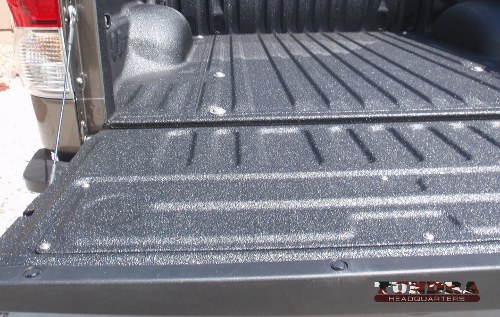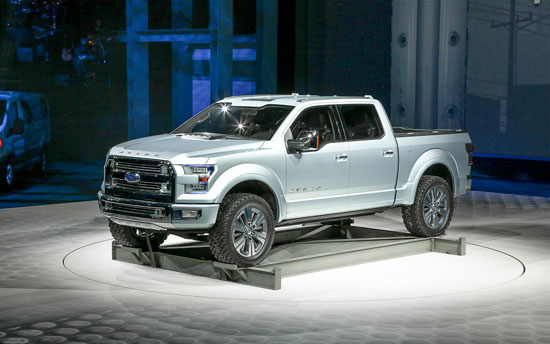
 Author Archive for Jason Lancaster
Author Archive for Jason Lancaster
Jason Lancaster is the editor and founder of TundraHeadquarters.com. He has nearly a decade of experience on the retail side of the auto industry, and another decade of experience of the part and accessory side of the industry.
What If Gas Prices Have Peaked? What Would That Mean For Truck Buyers?
“What if gas prices have peaked?” It’s a question I asked myself a few weeks ago, and it’s become a bit of an obsession for me since then. Partially, I’m curious about national gasoline prices, how they fluctuate relative to oil prices, how consumer usage of gasoline effects pricing, etc. Partially, I’m curious because automakers are working awfully hard to produce vehicles that consumer less fuel.
As far-fetched as it may sound, gasoline prices may have peaked (or may be peaking soon).
Do Bedliners Really Help Resale Value?
I was reading an article on an after-market company blog and it got me wondering…do bed liners REALLY help with resale? Here’s the section of text that got me wondering:
Checking on Edmunds.com, KBB.com, and checking [various truck] models on the NADAGuides.com website, most bedliners only seem to add $50-$100 in resale value.
When I first read this, I said “No way!” $50-100 for a bedliner? That seems absurdly low, especially when you consider that spray-in bed liners are so expensive and essentially last forever.

Spray-in bed liners look great, last a long time, and aren’t exactly cheap…why don’t they boost resale values more than $50-$100?
However, I did a little digging and found that most of the time, a bed liner is only a $50-$100 “add” when you look at trade-in or private party value online. I checked used Rams, Fords, and Tundras on KBB.com, Edmunds, and NADAguides.com…and they always came back in that range. Even on trucks that were relatively new.
The next question in my mind – why so little? For the answer, I called a couple of friends in the car business.
Search terms people used to find this page:
- tundraheadquarters
Believe It or Not, Volkswagen WANTS The UAW
When the workers at Volkswagen’s plant in Chattanooga voted against UAW representation, a lot of people were happy. Tennessee senator Bob Corker and governor Bill Haslam, both of whom threatened to yank tax incentives if the UAW won, expressed satisfaction. Conservative commentators around the nation talked about the “death of the UAW,” and commenters here on TundraHeadquarters traded anti-UAW barbs.
To be clear, I’m not a fan of the UAW. While the UAW helps all autoworkers earn more money (UAW labor rates set the standard for the rest of the industry), the union also promotes an “us vs. them” attitude among workers that is neither appropriate or productive. I’ve written time and again about the UAW’s ineptitude and general awfulness.
Yet this time, I think the UAW should have won…and I think the UAW’s loss is a slap in the face to business owners everywhere.
Search terms people used to find this page:
- tundraheadquarters
VW’s Super Bowl Ad Is Pretty Damn Sexist
VW’s “Wings” commercial seriously annoys me. See if you can spot why:  Did you see what I saw? Almost no female engineers! Here’s why that’s BS, and why everyone (but especially men) should care.
Did you see what I saw? Almost no female engineers! Here’s why that’s BS, and why everyone (but especially men) should care.
Ford’s Aluminum Body 2015 F150: Is 30mpg Worth The Risks?
I feel sorry for the decision-makers at Ford. I’m not bagging on Ford (for the record, I think they deserve a hell of a lot of credit for being so bold), but their decision to use aluminum extensively in the upcoming F150 is the result of a terrible choice.

Ford’s Atlas concept, a preview of the aluminum F150 set to debut early next week.
By my reckoning, Ford had only two options when it came to designing the next-gen F150:
Option #1 – Keep building the same great tried-and-true steel truck while using an increasing variety of tricks and fancy systems to squeeze out a few more MPG’s, or;
Option #2 – Take a big risk and be the first automaker to make a truck that extensively uses light-weight materials.
While option #2 is the most logical – weight loss is the best way to improve fuel economy and meet government-mandated fuel economy requirements – it’s easily the worst best choice available. I have no doubt that the first generation of aluminum F150s will be universally disliked by truck owners in the decades to come. This is not a commentary on Ford’s engineering talent. This is the inexorable conclusion I’ve been lead to based on all the available data. If you keep reading, I expect you’ll come to the same conclusion.
Search terms people used to find this page:
- tundraheadquarters

